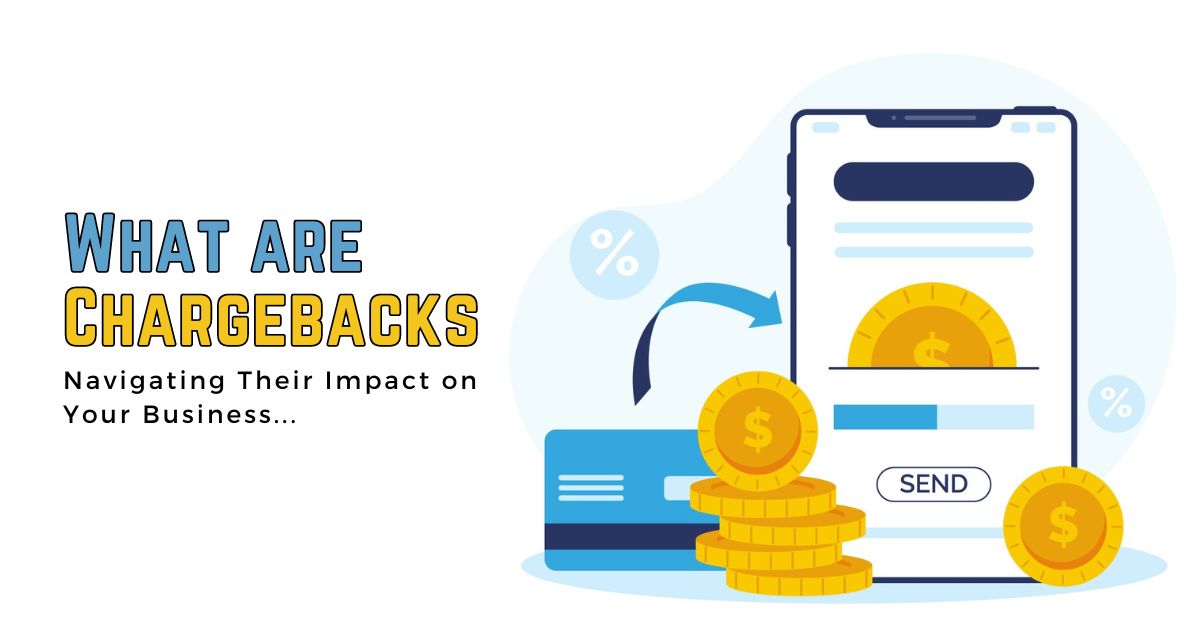
| June 11th, 2019 |
What Is Meant By Chargebacks? To What Extent They Affect Any Business?
At first, a chargeback may appear to be synonymous with the word ‘refund.’ Nevertheless, the points of difference between these two terms are fundamental but potential to deteriorate a merchant’s market reputation. And hence, it is not in the interest of any business to overlook chargebacks.
What Do You Mean By Chargeback?
Chargebacks differ from refunds because the latter are worked out between the consumer and the merchant, without involving any third party. On the contrary, chargeback necessarily involves the cardholder’s bank to dispute a card transaction.
Chargebacks protect consumers making purchases with their cards from any kind of fraud. Unauthorized transactions and any kind of card transactions in which the service or product has been not delivered are subject to chargebacks by the cardholder’s bank.
In other words, a chargeback ensures the return of the amount to the cardholder that was earlier withdrawn from his account for an unwanted transaction by the merchant.
Claim Refund First:
Firstly, it is important to understand that the cardholder should initiate the process of chargeback only when his demand for a direct refund from the merchant has been denied. Escalating the process by skipping the first step of refund is considered cyber shoplifting. Cardholder is exempted from the rule only if they are a victim of identity theft.
This sequence is practiced for the following reasons:
- The consequences of chargebacks are not only serious but far-reaching too for both the parties but a lot more for the merchants.
- The possibility of consumers or cardholders taking undue advantage of their power of chargebacks cannot be ruled out completely. This attempt on the part of the cardholder is dubbed as ‘friendly fraud.’ Consumers typically try their hands at friendly fraud when:
- They experience buyer’s remorse
- They forget about it
- They didn’t follow the return policy in terms of time limit
- They were not available as per the delivery schedule
- They have ill intentions of keeping the product for free
Cardholders should draw an encouragement to ask for a direct refund first from the fact that while chargebacks take time, refunds are almost instantaneous.
What Are The Legal Grounds For Chargebacks?
A cardholder is entitled to a chargeback under various circumstances such as:
Fraudulent or unauthorized transaction:
As discussed earlier, this is the only case that qualifies and is acceptable even after skipping the refund step. It is exceptionally accepted because modern hackers are highly inventive in their ways of stealing identity.
Faulty product or substandard service:
This reminds us of why chargebacks were even invented. To protect consumers’ interest they needed to be empowered to demand their rights from the merchants who sell products and services which are inferior to what was promised in the advertisements.
Inappropriate charges:
Technical errors and machine mistakes are common and formidable but in case of a mistake, it should be corrected as soon as realized and not denied when requested for a direct refund by the cardholder.
Steps Included In the Chargeback Process:
The process is lengthy and complex and this is why it is best to avoid reaching this point. But when reached, the following steps should be followed:
- The consumer or cardholder files a claim to the card issuer or bank.
- The bank in turn establishes the validity of the claim filed.
- When found valid, the bank takes action.
- Now it is the turn of the merchant’s bank to be notified for chargeback.
- The merchant’s bank can dispute the chargeback on behalf of the merchant if there are some grounds to do so, or else the merchant is notified by his bank.
- The merchant has a choice of either accepting the chargeback or contesting its validity.
- If the merchant’s bank finds proper evidence to refute the chargeback, then only the bank carries out the dispute.
- Subject to the result of the dispute, the amount of money is either returned to the consumer or it is deposited in the merchant account if the decision is in favor of the merchant.
Consequences Of Chargeback —
For the merchant:
Merchants are liable to pay various kinds of fees associated with a chargeback and these are levied upon the merchant irrespective of the outcomes of the chargeback. Also, when monthly chargeback rates go over the predefined limits, merchants are made to pay excessive fines that are huge for any business.
Even resolved chargebacks where the merchant is not proven guilty impair the business’s health. Too many chargebacks and businesses are put into high-risk categories for which they might be charged differently for merchant account services or the merchant account might get terminated.
Moreover, disputing the chargeback cases is quite a hassle and exhausting for any merchant. The time and energy spent on these can be better utilized for productive business operations.
For the consumer:
Though not as terrible as in the case of merchants the consequences are still serious for cardholders too. Friendly fraud can hurt their credit score. Additionally, they might have to pay fees when denied a chargeback claim.
It is also seen that consumers who make fun of the system by fabricating such issues lose their credibility and are rejected for help when they are actually in trouble.
Hope you have understood by far that chargeback is not just a refund but it has a lot more to it. To have prosperous commercial relations between consumer and merchant it is mandatory to have mutual respect for the interests of both the involved parties.